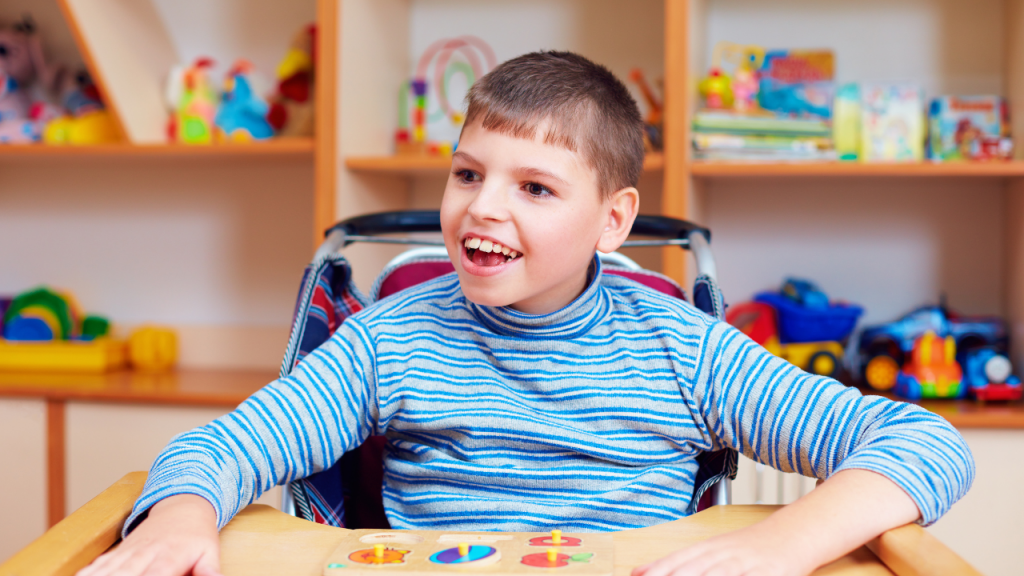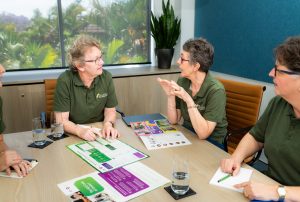The return to the new school year can sometimes be a daunting, anxious or thrilling time for a child. If you have a child with a disability, it can be an especially nervous time so maximising their opportunity to prepare and providing as much information as possible can help ease the whole family into a smooth transition.
You can also help reduce their feelings of overwhelm by preparing them for what to expect, who they can go to if they have an issue and what their daily routine will involve.
Get organised
You can never be too early when beginning to prepare your child for the new school year. Getting everything organised as soon as you can is the best way to reduce any nerves and smooth out the process of the first day back at school.
Organising uniforms, books, lunchboxes, snacks and supplies early will help streamline your preparation for when school starts. To assist with this, it is worth organising a visit for you and your child to the school before the first day to become familiar with its layout and extra support options. If your child has a difficult time with transitions, visiting the school beforehand is critical, particularly if it is a new school. This will inform you and your child know where they need to go, how they will get there and what school staff will be around to help them.
One step at a time
Focus on your child’s capabilities and work to build confidence by breaking down tasks at home into simple steps. Discuss with your child’s teacher about how this might also be applied in the classroom.
Develop partnerships
Collaborate with schools and health professionals to help ensure the best outcomes for your child’s development and mental health.
Prepare helpful resources
A transition book, filled with photos taken on a school visit, can help your child become familiar with their new environment. You may also wish to help teachers and classmates out by sharing some information about your child. This could take the form of a presentation, a flyer, an in-person session or reading a story about children with similar disabilities.
Find out the new routines
As early as possible, ask the new teacher to go over the daily classroom routine so you can review and practise it with your child.
Help create a positive community at your child’s school
When children feel connected and a sense of belonging, they are more likely to learn and have fun. Helping your child’s school to develop a culture of belonging and inclusion is especially important for children with additional needs. This might involve sharing your child’s particular requirements with the staff or volunteering your own time.
Preparing for back to school and transitioning to a new class
When preparing for back to school, it is important to focus only on what you can control. For instance, while you may not be able to control how a teacher relates to your child, you can help your child reduce their anxiety and stress by teaching them ways to manage their behaviour and deal with conflict.
Revisit the school environment
It’s human nature to feel more comfortable when you know your way around a particular environment. Even if your child is returning to a familiar school, the summer break can feel like a long time. Walking around and looking at visual cues can be helpful as can some time on the playground.
Prepare the school
Giving your child’s school and more specifically, their teachers, as much information as possible about your child and their disability can help ensure they are just as prepared as you are for the new school year.
Compiling a small profile for your child’s teachers outlining their disability, their character, any learning difficulties, strengths and weaknesses, and triggers is the best way to support new teachers and can educate them on the best way to support your child. Ideally, this can be handed in on the first day of school so that you can visit the classroom and meet each other and establish a rapport.
Alternatively, email this profile to the teacher directly, or to the school and ask for it to be passed on to your child’s teachers.
Consider your child’s individual needs
Talk about school in a casual way over the break and how you felt about returning to school. This is an opportunity to share what you did and did not like, and you could invite your child to do the same. If there are concerns that feel overwhelming, these are worth sharing with the new teachers. Using similar strategies at home and at school can strengthen your child’s skills and help set them up for success. Share with the school what works for your child at home and ask for their feedback about what strategies are working at school.
Practice makes perfect
School holidays often see daily habits and routines subside as we wind down over the break, but it’s important to reinstate that structure before school goes back.
Getting a head start on practising elements of school life such as waking up early, social interaction or playground etiquette and getting dressed can make the first day back a breeze. Ensure your child is familiar with your daily routine and consider having a visual schedule or timetable available to them so they can follow along. Practice makes perfect, and the more times you can successfully complete your morning routine before school goes back, the more your child will be calm and prepared.
Get to know the key leaders
Meet with the principal, year level leaders and coordinators of learning support programs to work on a transition plan and also to put your support network in place. Find out how you can work together for the best possible outcomes for your child. Make sure you attend parent-teacher conferences to show your commitment and involvement to their education.
In all the school transitions you can expect to encounter, it is important to remember nobody’s perfect. Collaboration and communication, alongside gratitude and appreciation, go a long way in building successful relationships with school staff and helping your child to enjoy their time at school.





